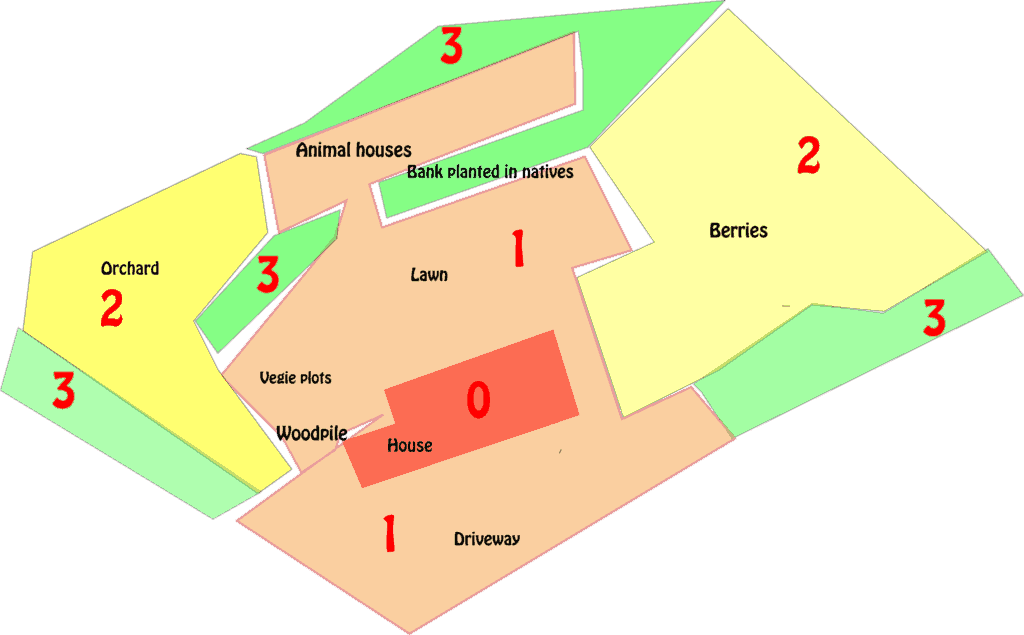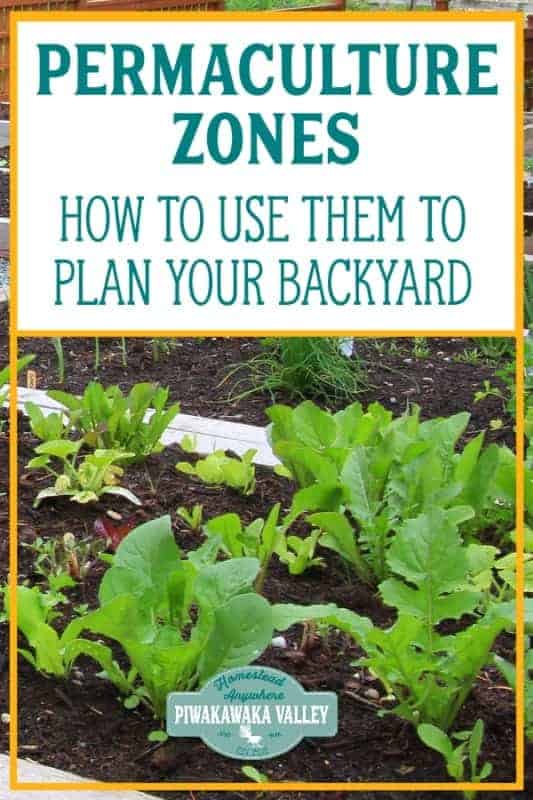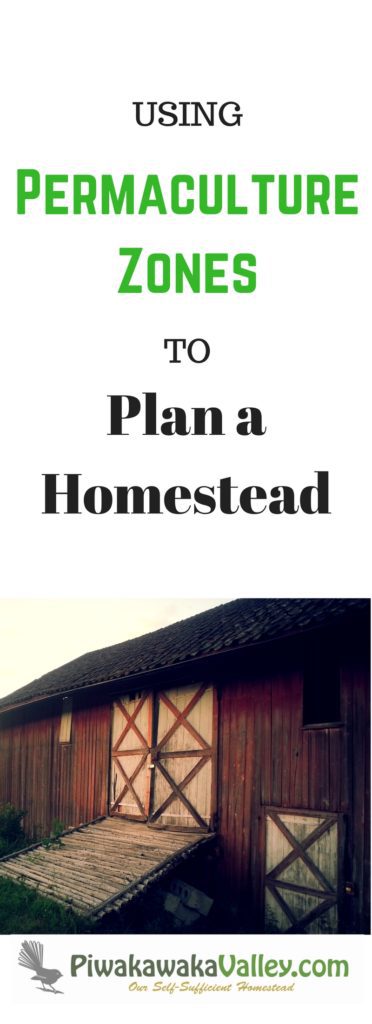This post was most recently updated on January 26th, 2021
Permaculture has a theory of “zones” to take into account when deciding on the layout of your homestead. Here is the case study of our homestead to demonstrate how to use permaculture zones to place items for best efficiency.
Please read: This information is provided for educational purposes only and is not intended to treat, diagnose or prevent any disease. We encourage you to make your own health care decisions in partnership with a qualified health care professional.
This post contains affiliate links, this means at no extra cost to you, we make a commission from sales. Please read our Disclosure Statement
Permaculture Zones are a system that decides where things are placed by:
- How often we need to use the element
- How often we need to service the element
Pretty logical really, the things you use most often, and the things you have to pay the most attention to, are placed within the permaculture zones closest to the house.
The things that are used the least often, or that require little or no attention, are placed furthest away from the house. Permaculture have other fantastic ideas like using mulch to improve soil and reduce workload, and cover crops.
Permaculture Zones Explained
Zone 0 – This is the home itself, the centre of activity.
Zone 1 – These are areas close to the house that you access most frequently – at least once or twice per day. Kitchen gardens, animal houses, firewood etc.
Zone 2 – These are still areas accessed often, but less often than zone 1 – vegetables with a long growing season, orchards, bee hives etc
Zone 3 – This zone is basically farmland, where the main crops are grown and where livestock is kept and grazed. Once these areas are established, they only require minimal maintenance and care.
Zone 4 – This zone is a part wild/part managed, and its main use is for collecting wild foods, timber production, as a source of animal forage, and pasture for grazing animals.
Zone 5 – Totally wild and un-managed areas.
Using Permaculture Zones to plan your Homestead:
Currently our place is largely gorse, and steep hills.
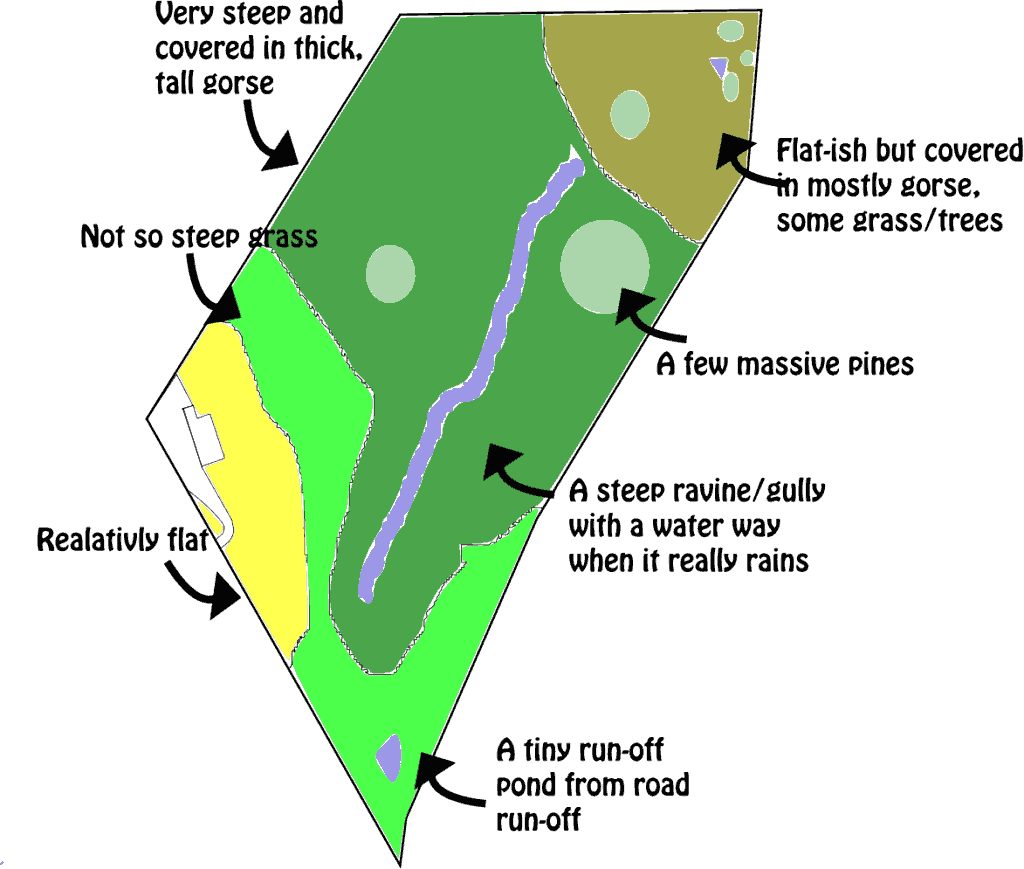
The Permaculture Zone 4 on this plan is a very steep ravine/gully that we doubt we will be able to access for many years to come. It does appear to have some natives regenerating in it – including 2 massive cabbage trees. I love cabbage trees.
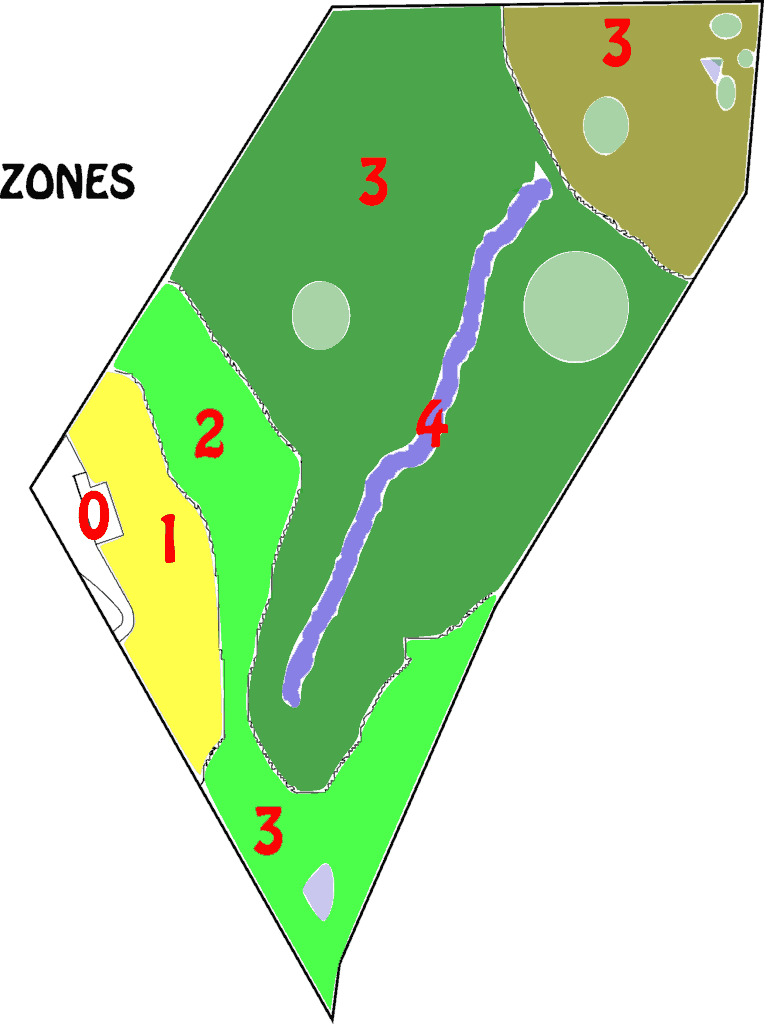


 The practical side of using permaculture zones
The practical side of using permaculture zones
The idea of the permaculture zones totally changed where we initially thought we would be putting the animals and where the vegetable garden would be going. I am much happier with the plan now, with these things all within easy access of the house.
Also little things like putting the pig pen closest to the side drive to make them easier to get on a trailer at slaughter time. And having the goats in the pen at the far other end closest to the paddock and far away from my precious fruit trees. Chooks, fodder house and bunnies in the middle.
For a great list of nitrogen plants read here, and for companion plants, read here.
Did you think about permaculture zones when you designed your place? Do you have any suggestions for us before we get building these areas?
I have put together all I know about growing food forests in temperate zones and written this book on them, you can check it out here.
If you would like help getting the most out of your garden, I would love to help you, find out more here
RELATED: Free Gardening Resources
If you like tips on frugal living, self sufficiency and consuming less, sign up to our newsletter below, I would LOVE to have you
For further reading, I also recommend all of these books. I own every one of them and they are amazing resources!
If you like tips on frugal living, self sufficiency and consuming less, sign up to our newsletter below, I would LOVE to have you!
Please Pin and Share with your friends and family!


